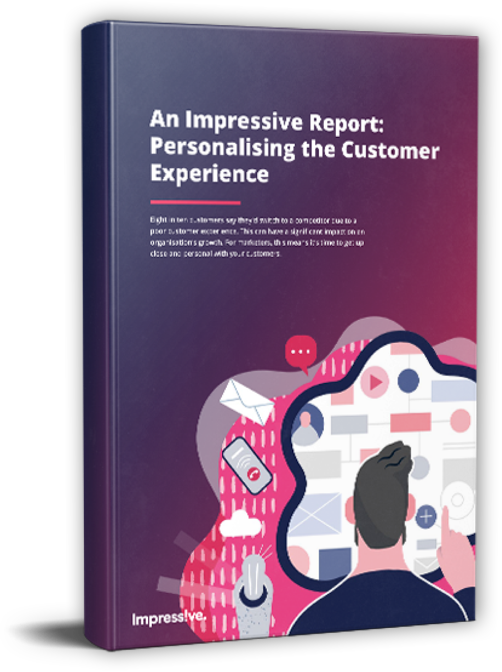Years ago, when I was first learning the ropes of marketing automation, I was part of a project building a value-based lifecycle nurture stream for B2B prospects – it included useful content that was dynamically personalised for a prospect’s specific industry needs.
A new marketing manager came to me a few months into their tenure and told me that the lifecycle nurture wasn’t valuable enough to continue investing resources into. After six months the revenue from people clicking on emails just weren’t enough.
Had all my hard work been for nothing?
Justifying email automation
This didn’t sit right with me. For one, these weren’t sales emails – the goal was to give prospects content, not feed them into a conversion funnel. Secondly, engagement with the emails was really solid, with consistently great open and click-to-open ratios. I knew the emails were having a positive impact on conversions, I just needed a way to prove it.
I found – and started utilising – attribution models for email marketing.
Out of professional spite.
Email assists conversions
Back then, having an automated lifecycle nurture program was unusual for B2B and even B2C – every marketing department knew the importance of email campaigns, but having a fully-automated nurture stream of never-ending value-based content was rare.
And sure, the odd recipient showed a direct conversion path from clicking an email. But what was far more likely, I discovered, was that email engagement popped up again and again on the path to conversion, without necessarily being the last direct interaction.
Which of course is the point of a lifecycle nurture – you establish brand familiarity and trust with a prospect, so you remain front-of-mind to influence their purchase decision. If marketing only needed one singular moment of interaction, then major brands like Coca Cola would have just one billboard above a city’s largest intersection and then watch the sales roll in.
We know that’s not how it works. You, as a consumer and not just a marketer, know that you often contemplate a purchase, whether the lead time is brief or prolonged. Big ticket items, small luxuries, items for your kids or house or job, a new phone service or a home loan. You think about it. And ultimately, what may feel like a split decision to buy has been nurtured by repeated product exposure and being assured of its benefit. Often, by email.
But how do you prove it?
Email’s role in multi-channel marketing
Attribution modelling in marketing works on the premise that the value of a conversion can be assigned in multiple ways. Most businesses utilise the Last Click method by default – that the final interaction of a prospect is responsible for 100% of the revenue generated. Although tracked the most reliably, this is deeply flawed – consider how many conversions come from a ‘direct’ source. That is, someone typed in a brand’s URL and proceeded to purchase. They didn’t wake up that morning magically knowing the brand and their URL.
Organic and paid search, social and display advertising are less-flawed sources, but still complicated. Yes, someone may type keywords into a search engine and click on the first option. But it’s also just as likely they click on the first brand name they recognise. In this way, multi-channel marketing is like a symphony – many instruments working together for a harmonised result.
But here’s the thing: email is unique among sources. No ad or search result can give the same level of detail and interaction that email can. Email isn’t just the flash of a product to scroll past. It’s an informational experience that provides varied ways to interact.
All other digital marketing sources offer a single CTA. Email offers a user interface.
Assigning value on the path to conversion
There are multiple ways to model attribution for multi-channel marketing, including assigning the value of the conversion to the first click, or assigning different percentages of value to each interaction in a linear format, or using a theory of time decay to assign greater value to the most recent interactions. You can even simply click around in Google Analytics and look at the numbers for conversion assistance based on how many steps back on the path to conversion an email was – I’ve noted the numbers seem to be more significant in the second-to-sixth steps back.
My personal favourite to establish the knock on value of email, though, would be attributing conversion value on the last interaction prior to the one that led to conversion. This neatly covers off the problem of the direct source – the person who directly accesses a brand’s website to make a purchase.
It also helps to show the influence of email on a prospect who has been touched at multiple points. In a Last Non-Direct Click attribution model, you can identify an email’s immediate proximity to conversion. The prospect receives the email, interacts with it, but doesn’t make the purchase at that time. Later, they access the brand website directly or arrive via another source and make the purchase. This shows the direct influence an email has had on the purchase, without the fiddly process of assigning a percentage of value based on a time decay or a linear model.
An email doesn’t have to link to a conversion funnel to result in revenue.
The proof is in the data
To give you an example, I recently looked at a brand’s immediate, ‘Last Click’ email conversion value over a 90 day period, and it totalled a respectable $100k. This is for a photographic equipment company whose products range in price from under $100 into the $1000s range. Not bad for a couple of emails a week! However, when I switched the model to the last Last Non-Direct Click model, the attributed conversion value ballooned to a further $300k. This doesn’t even take into account the numerous emails in previous steps, or how the email nurture complemented the efforts of other marketing channels. When looking at the role of email up to ten steps prior to conversion, the value was over $600k. That’s 6x the value of purchases directly from email!
In digital marketing, there’s no single billboard over an intersection and hoping for the best. Multi-channel marketing works in concert, and email drives conversion rates for other channels.
There is no such thing as a one-touch conversion.
Back to the story of spite
Marketing automation goes a step further than retargeting users – it allows marketers to provide a tailored, customised user experience. By carefully cultivating that prospect information over time, you can narrow down what they are interested in purchasing, and what they are most likely to respond to across other digital channels, and how to increase customer retention.
When my lifecycle nurture was questioned, I was able to use the existing data of converted prospects and clearly outline their consistent contact with email on the path to conversion. Email may not often have been the final step, but it facilitated it. And the best part about an automated nurture program is it’s set and forget – your prospects will keep your brand front-of-mind with every new email.
A greater understanding of attribution for email marketing led me to make more strategic decisions for both nurture and ad hoc campaigns from that point on. I can show any client that has Google Analytics in place across all their channels the value of email isn’t limited to a direct click-to-purchase result.
I have the data to back me up.Did you find this article useful? It’s the first of a multi-part series looking at the business value, technical potential and customer outcomes of email marketing and marketing automation. Follow me or Impressive Digital on LinkedIn to see future articles.
References:





